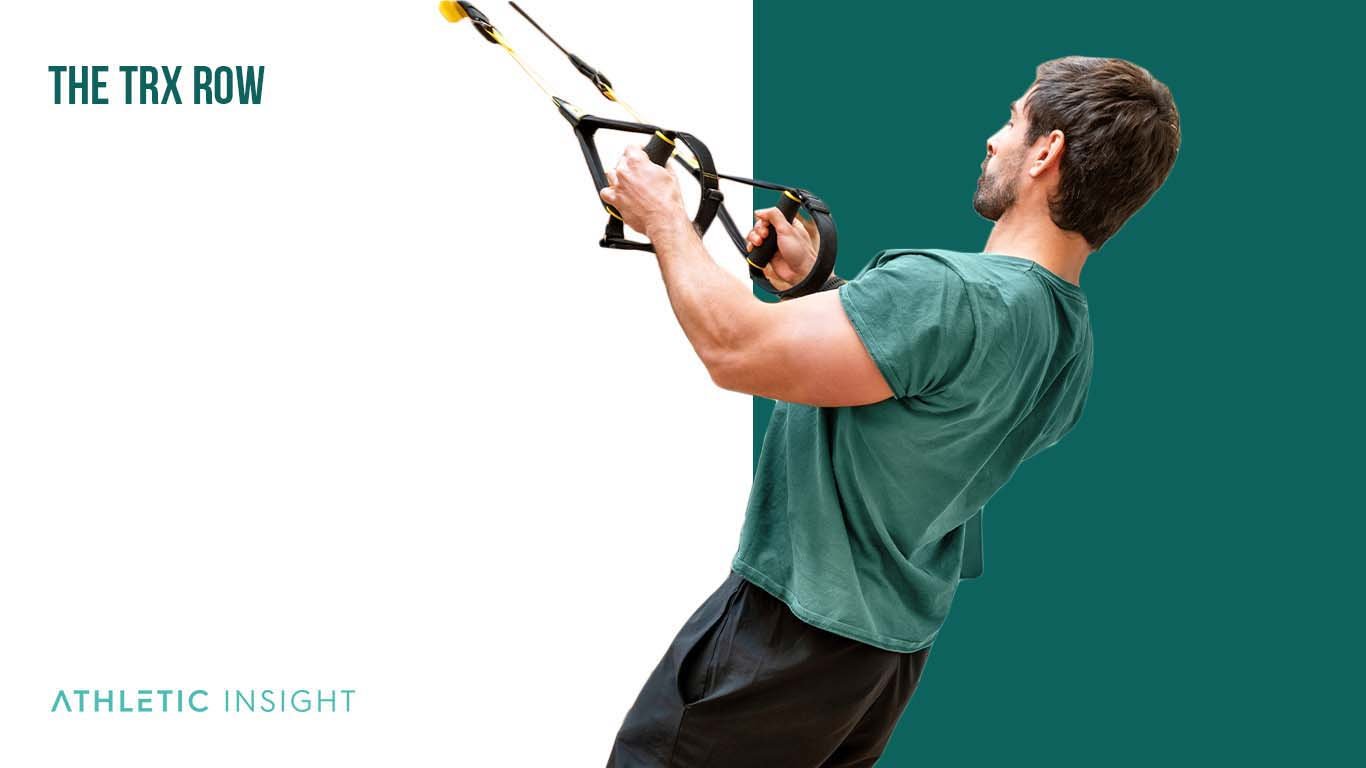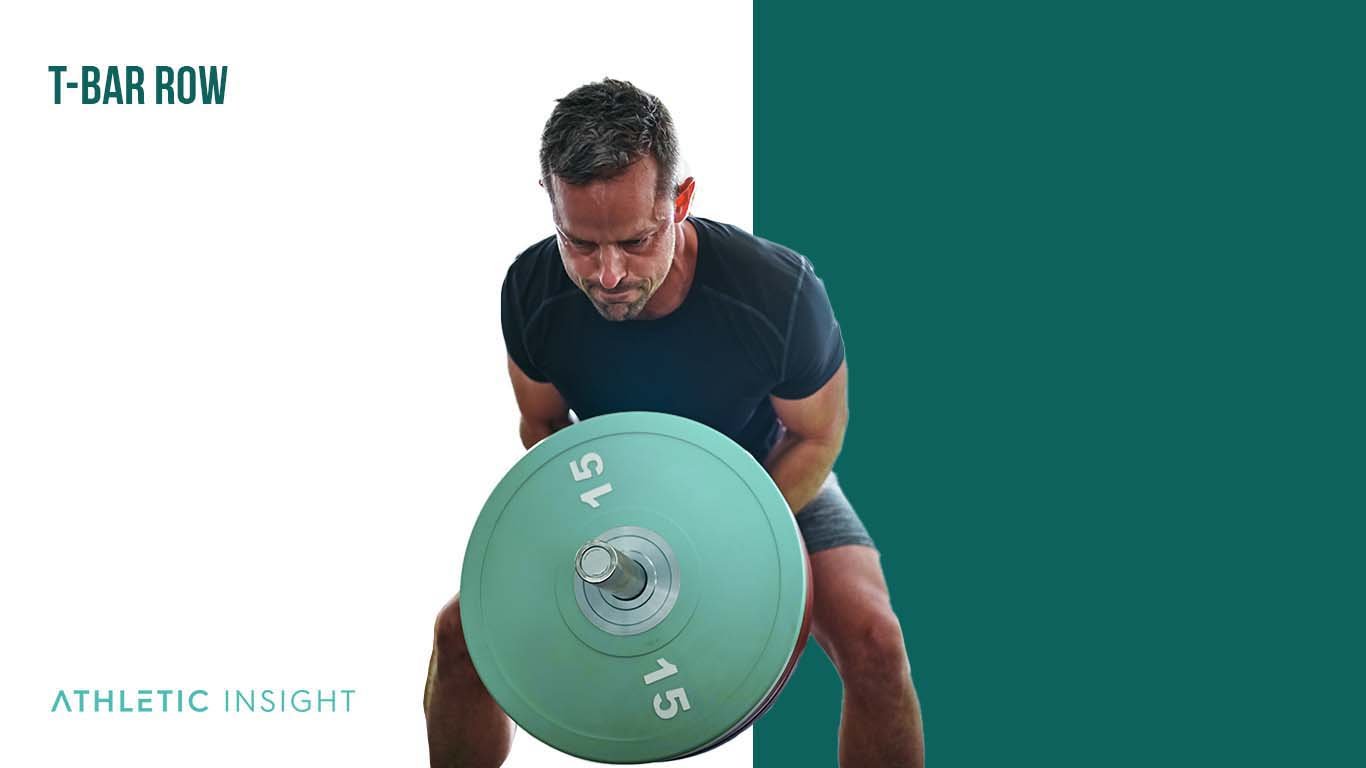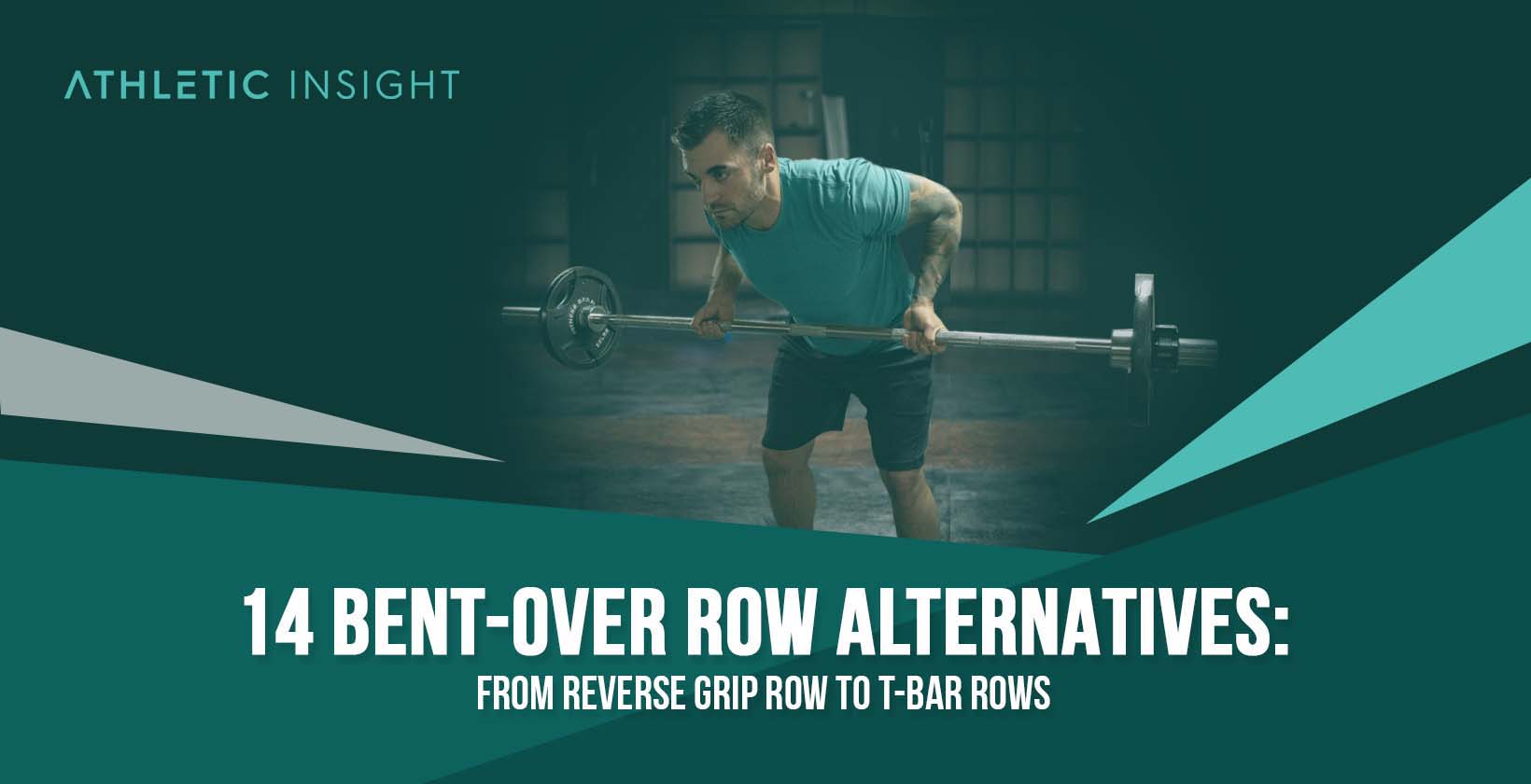Bent-over row alternatives are specific exercises that work out similar muscle groups as the bent-over row. Like the bent-over row, these exercises primarily target the upper back. Some bent-over row alternatives are compound exercises that also involve the legs and core, while others focus mostly on the upper back.
Some bent-over row alternatives are less likely to injure the lower back. Alternatives like the chest-supported row reduce the risk of injury because your torso has support during the exercise. Yet others may not require the same equipment, making it easier to perform them at home and still get a full back workout.
Bodybuilders, powerlifters, and athletes may use these alternatives to replace the bent-over row or to supplement it. Supplementing the bent-over row with these alternatives can help you work out specific back muscles. They may not incorporate as many muscle groups as the bent-over row, allowing you to perform more reps in a set without fatigue.
There are 14 main bent-over row alternatives. Some bent-over rows alternatives, like the seated cable row, are extremely popular, and you’ll see lifters perform them in gyms everywhere. Others, like the Kroc row, are lesser-known.
Some of these bent-over row alternatives, like the reverse-grip row, focus more on the lats than the standard bent-over row. Others, like the supported chest dumbbell row or seated cable row, are more suited for beginners. Yet others, like the Yates row, are more advanced movements.
In general, there are a few main bent-over row alternative classifications. For example, classic alternatives include the dumbbell row or inverted row. Some alternatives are designed to increase strength, while others are for powerlifting (like the Yates row).
Here are the most common bent-over row alternatives.
- Bodyweight bent-over row alternative
- Kettlebell bent-over row alternative
- Barbell bent-over row alternative
- Bent-over row alternatives for home
- Trap-bar bent over row alternative
Following is the full list of the 14 bent-over row alternatives you should consider incorporating into your training regime.
1. Reverse Grip Row With Barbell
The reverse grip row with a barbell is a bent-over row alternative that focuses on the lats for bodybuilders and powerlifters. It involves using an underhand grip as opposed to an overhand grip when rowing. It’s a hard exercise to perform correctly while maintaining proper form, so beginners should avoid it.
Your elbows will be closer to your torso, with your arms closer together. You’ll also be pulling the bar to your lower stomach – lower than with a regular bent-over grip.
As such, it will target the lats and biceps more than a regular row. It targets the rhomboids, traps, and other upper-back muscles. It’s perfect if you want a more developed back.
It’s critical to keep your back slightly arched and naturally curved, just like a regular bent-over row. Also, don’t start with too much weight, especially if your biceps are not that developed. A common mistake is not adjusting the reps or weight for the increased bicep involvement.
2. Inverted Row
The inverted row is a barbell bent-over row alternative that focuses on the lats for athletes, bodybuilders, and sporters. This barbell row alternative involves keeping the bar stationary on a rack, going under the bar, and rowing your body in an upward position, to and from the barbell.
It involves up to 60% more muscle activation in the lats than the standard row, making it better for back development. It also puts less strain on the lower back, as you don’t need to support the weight of the bar.
It doesn’t involve the hips or legs as much. Therefore, if your legs are sore from leg day, it can allow you to perform longer sets.
The inverted row is a safer alternative to the barbell row that also helps you build core strength, as it’s a bodyweight exercise. It’s also relatively easy to do it with proper form.
It’s critical to maintain proper posture when performing this exercise. Make sure to use an overhand grip. Also, avoid the mistake of pushing your chin towards the bar instead of your chest.
3. Lying Bench Rows
The lying bench row is a barbell bent-over row alternative focusing on the mid-back muscles for bodybuilders and strength trainers. It’s easy to perform; it involves lying flat on your stomach on a bench, placing a barbell underneath the bench, and rowing it up to your body.
Your chest should be in contact with the bench the entire time, and you should maintain a strong frame. This exercise allows you to isolate the mid-back muscles as opposed to letting your lower back do the work. A common mistake is arching your back, which would negate the above benefits.
4. The TRX Row
The TRX row is a bent-over row alternative focusing on the upper back muscles for at-home bodybuilders, sporters, and strength trainers. It targets the upper back muscles, including the latissimus dorsi, rhomboids, and traps. Furthermore, it increases strength in the entire posterior chain.

It involves using a TRX suspension machine, which is easy to set up at home. It doesn’t require heavy or expensive equipment, making it the perfect bent-over row machine alternative for people who travel around. Furthermore, even beginners can do it without struggling to maintain form.
Hold the TRX handles while maintaining a diagonal position and row yourself up to the handlebars. It’s important to keep your shoulders locked in place. Furthermore, strengthen your core, so you don’t fall back while performing the exercise. A common mistake is letting your shoulders go limp and your body fall backward in the descent.
5. T-Bar Row
The T-bar row is a bent-over row alternative focusing on the upper-back muscles for bodybuilders and strongmen. It’s one of the easiest bent-over row machines to use with proper form, even for beginners.

Most gyms will have a T-bar row machine. You can vary the weight; the machine is designed to isolate your upper-back muscles.
Simply lean onto the inclined bench and row the bar up towards your body. Some machines give you more than one option for holding the bar, allowing you to switch up the muscles you work. You’ll find it easier to load more weight on the T-bar row than on the standard bent-over row.
However, a common mistake is not starting with a lower weight when performing it for the first time – doing that will help prevent injuries.
6. One-Arm Dumbbell Row
The one-arm dumbbell row is a bent-over row substitute focusing on the latissimus dorsi, traps, rhomboids, and biceps for bodybuilders. It won’t allow you to use as much weight as the bent-over row, so it’s not the best for powerlifters. The difficulty level is medium.
The main difference between a bent-over row and a one-arm dumbbell row (besides using dumbbells instead of a barbell) is that you will be rowing with only one arm at once. That will help you correct muscle imbalances.
Start by putting your left knee on a bench. Bend over while keeping your right leg firm on the floor. Row with your right arm.
It’s critical to bring your arm back entirely to get the most benefit from this exercise. It’s also a good idea to try both an overhand and reverse grip dumbbell row. One mistake you must avoid when performing the one-arm DB bent-over row is swinging your arm instead of maintaining a slow and steady range of motion.
7. Single-Arm Dumbbell Row
The single-arm dumbbell row is a bent-over row alternative for the lats and biceps for bodybuilders and gym rats with limited equipment or lower back issues. The single-arm dumbbell row is basically another name for the one-arm dumbbell row. As it’s the same movement, the same tips and precautions apply.
8. Kroc Rows
The Kroc row is a bent-over row alternative focusing on the upper back, bicep, and forearm muscles for competitive strongmen and powerlifters. It puts more of a focus on row weight lifting – the weight of the dumbbell – rather than form.
Kroc rows were invented by Janae Marie Kroc (formerly Matt Kroc), a professional powerlifter and bodybuilder. The goal with Kroc rows is to lift as much weight as possible while performing as many reps as possible, using extra heavy dumbbells. The exercise is similar to a single-arm row otherwise.
You should try to pull the dumbbell in a straight line all the way. Kroc recommends contracting your shoulders at the top and letting your arm drop at the descent.
The most common mistake is to perform Kroc rows when you aren’t ready. It requires a lot of grip strength, and you’ll find your grip strength improving with each set. If you can’t lift a lot of weight, you’d be better off performing regular dumbbell rows.
Because it involves such heavyweights, maintaining proper form (basic form is still critical) while performing this exercise is difficult.
9. Body Rows
The body row is a bent-over row alternative focusing on the upper back and biceps for amateur bodybuilders and at-home lifters. Unlike an inverted row, which requires a barbell and a Smith machine, you can perform a body row without any gym equipment.
Many new lifters find body rows easier to perform than pull-ups, making it the perfect back exercise and alternative to the bent-over row for home workouts. You can use outdoor gym equipment – such as a tricep dip stand – or even the ladder bars in an average children’s playground.
A good tip if you don’t have any of those is to take a strong broomstick or metal bar and place it on two chairs and use that for your body row. You can even perform body rows on a sturdy table, holding the edge and rowing yourself up to the table.
The most common mistake when performing a body row is pulling the bar too high up on your chest, which can cause your elbows to flare out. Try out different body positions and inclines. Overall, the difficulty level is easy – since it’s a bodyweight exercise, you get more flexibility in terms of form.
10. Seated Cable Rows
The seated cable row is a bent-over row alternative focusing on the upper back erector spinae muscles, middle trapezius, and lower trapezius for athletes, strong lifters, and bodybuilders of all skill levels. The difficulty level is easy, as it’s a machine alternative to the barbell row.
The seated cable row is a lot safer than the barbell row, and it’s also excellent for those with hip or lower back injuries. Try switching up the handlebar you use, if there are a few available in your gym, to see which one you are most compatible with. It’s a general back exercise, but the different handlebar styles can help you target slightly different muscle groups.
Grab the handlebar and row towards yourself. Focus on the contraction when performing a seated cable row. If you have trouble controlling the descent when performing a bent-over row, you’ll find it easier when doing seated cable rows. It’s also easier to increase the weight.
Keep your torso straight – if you lean back, don’t lean more than 10-15 degrees. A common mistake is to lean forward or lean back too much.
11. Lawnmower Rows
The lawnmower row is a bent-over row alternative focusing on the shoulders, lats, biceps, and core for athletes and lifters. You’ll be starting from an athletic lunge position, with one foot in front of you and one foot behind you. It’s similar to a one-arm dumbbell row, but you’ll be standing in a lunge position rather than putting one knee on a bench.
It allows for better body stability than the bent-over row and doesn’t require as much equipment. You’ll be performing a row with one dumbbell at a time – it’s an alternating row. A good tip is to put your empty hand on your front-facing leg for stability. If you want to increase the difficulty of the movement, stretch it out to your side.
It’s crucial to lean forward and keep your back straight. A common mistake is rotating your shoulder back on the lift, but doing that can cause shoulder pain and prevent you from getting the most out of the exercise. Overall, performing this lift while maintaining form is easy.
12. Chest Supported Dumbbell Rows
The chest-supported dumbbell row is a bent-over row alternative focusing on the lats, traps, rhomboids, and biceps for beginner and intermediate lifters and athletes.
Since you don’t need to use your lower back and hamstrings to stabilize yourself, the incline dumbbell row alternative allows you to isolate your back muscles more and prevent lower back pain.
It involves lying flat on an inclined bench. You’ll be using dumbbells instead of a barbell, but you’ll be rowing two at once.
A common mistake is not keeping your head above the bench. That’s important because you won’t get a full range of motion if your face is pressed into the bench. It’s also a good idea to vary the incline. Experiment with different angles between 30 and 45 degrees. Make sure you are on flat ground and avoid swinging your arms – keep your travel steady.
13. Renegade Rows
The renegade row is a bent-over row alternative focusing on the core, upper back, and shoulders for amateur or professional bodybuilders, strength lifters, and weight trainers.
It involves dumbbells only, making it a good home workout alternative. Put the dumbbells on the floor and lift yourself into an upright plank position while keeping your arms straight above the dumbbells, holding onto the bars. Lift one dumbbell at a time and row your arm up straight behind your torso.
A common mistake is using too much weight at first, which might cause you to jerk around and lose proper form. The difficulty level for this exercise is high, as it requires a lot of balance and core strength.
Keep your hands directly below your shoulders. Also, it’s useful to think in terms of rowing back instead of up, being that you are in a diagonal position.
14. Yates Row
The Yates row is a bent-over row alternative focusing on the lats, erector spinae muscles, and posterior deltoid for professional powerlifters and strongmen.
Former Mr. Olympia Dorian Yates invented this exercise. You’ll be using an underhand grip and keeping your arms shoulder-length. This exercise is almost entirely similar to the regular bent-over row, but you’ll only be leaning your torso at a 30-degree angle. That way, you’ll put less strain on your lower back.
Make sure to bring the barbell up to your stomach instead of high up on your chest. Start off with less weight until you are comfortable. A common mistake is leaning over too much.
What to Know About Bent-Over Row Alternatives?
Facts about bent-over row alternatives are listed below.

- Muscle Growth: Bent-over row alternatives can benefit certain muscle groups better than barbell bent-over rows (such as the lats and upper back) since they frequently don’t require as much input from the hips, hamstrings, and core.
- Safety: Many alternatives are safer than the bent-over row and put less strain on the lower back.
- Ease: Some alternatives to barbell rows, like seated cable rows, are better suited for beginners.
- Popularity: Some bent-over row alternatives were invented by and named after famous bodybuilders, powerlifters, and Olympic winners (like the Kroc row and the Yates row).
Overall, these alternative movements accomplish the same goal as the barbell row: building your upper back. Furthermore, many are easier and do a better job of it, while keeping your lower back safe.
Which Bent-Over Row Alternative Is Beginner Friendly?
Beginners getting into row weightlifting should stick to the seated cable row. It’s the most beginner-friendly alternative, and you’re least likely to injure yourself when performing it. It’s the best bent-over row machine alternative.
Which Bent-Over Row Alternative Is Better for the Butt?
If you’d also like to work out the glutes, consider the inverted row. The glutes are not the main muscle group that it works. However, they do get activated quite a bit.
Which Bent-Over Row Alternative Is Better for the Back?
All rowing exercises activate the back. However, the best alternative to bent-over rows for your back is the T-bar row (or supported chest row if you don’t have a T-bar). It effectively isolates your back muscles by avoiding too much input from your lower body. Adding the Bent-Over Row to any back routine will help develop the back muscles.
Which Bent-Over Row Alternative Is Better for Strength?
For strength, consider the Kroc row. It requires a lot of strength – Kroc is a powerlifter, after all. It also helps you burn more calories, as you need to use up more energy.
When Should an Athlete Use a Bent-Over Row Alternative for Exercise?
An athlete should consider alternatives to the bent-over row if they get lower back pain when performing it. A bent-over barbell row alternative should also be on the table if you want to fix muscle imbalances. If you are a beginner and don’t feel ready for the bent-over row, try a machine or bench-assisted row.
Can Bent-Over Row Alternatives Replace the Barbell Bent-Over Row?
Every workout has its place in your routine, and there’s rarely a need to replace one routine with another. The bent-over row variations will help with particular muscles that the barbell bent-over row may not, and vice versa. The Barbell Bent-Over Row is, after all, a Bent-Over Row variation, and it’s one of several that lifters can include in their routines.
However, if the Barbell Bent-Over Row is causing lifter pain, particularly in the lower back, other bent-over row alternatives would not be helpful. Instead, a lifter should opt for a T-Bar Row alternative that takes the strain off the lower back, such as an upright or chest-supported variation.
Some bent-over row alternatives can replace the barbell bent-over row. For example, the supported chest row or the one-arm dumbbell row will give you excellent results. The Yates row will too, although movements like the seated cable row won’t work out the core in the same way.
What Are the Bent-Over Row Variations?
The bent-over row variations include the Pendlay row, the Smith machine bent-over row, and other high-level variations. For example, the Pendlay row, unlike the traditional bent-over row, involves placing the row on the ground between each rep. In short, these movements take the bent-over row and try to make it easier or improve on it.



